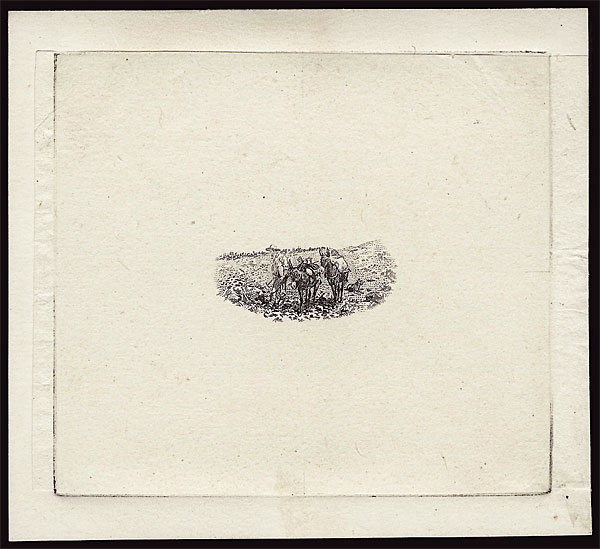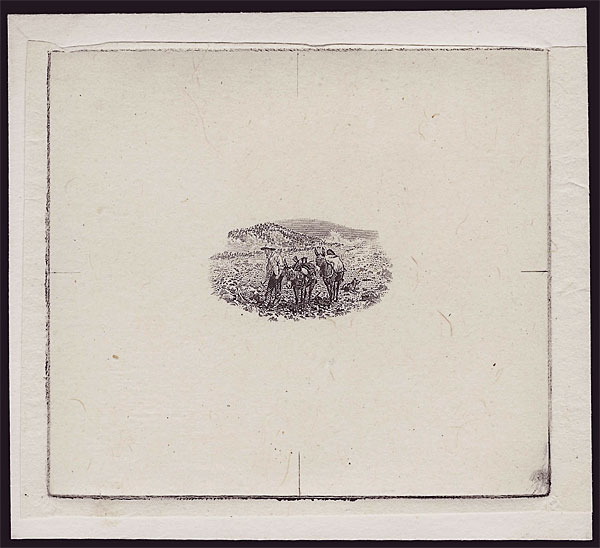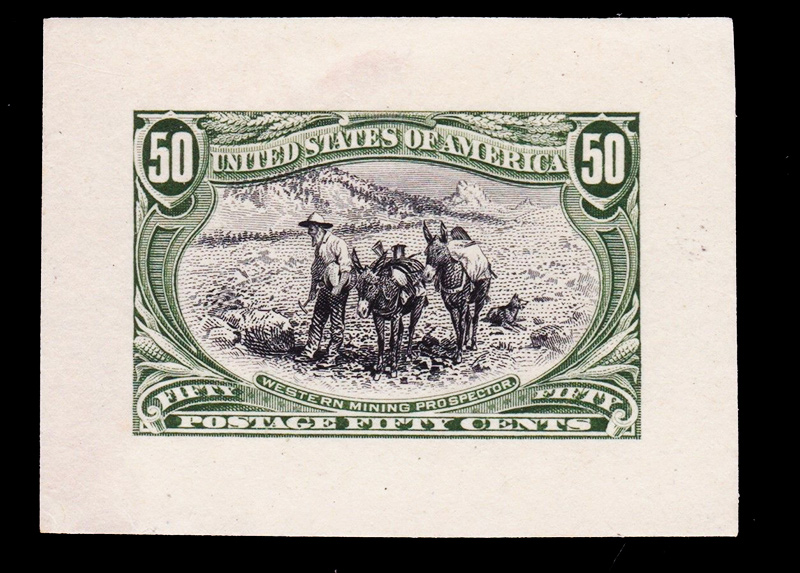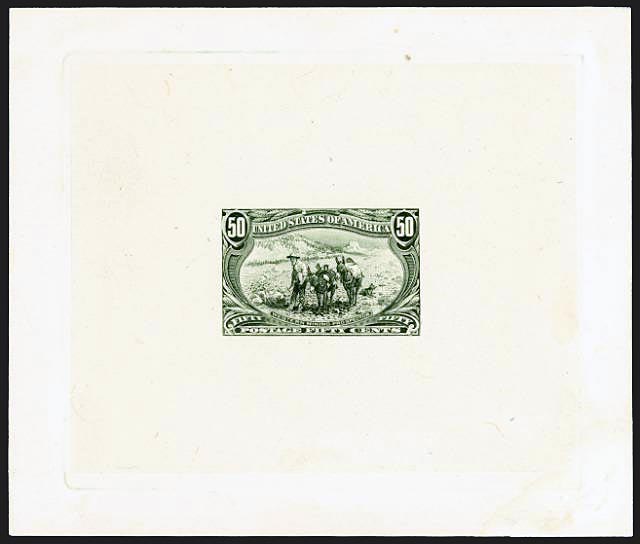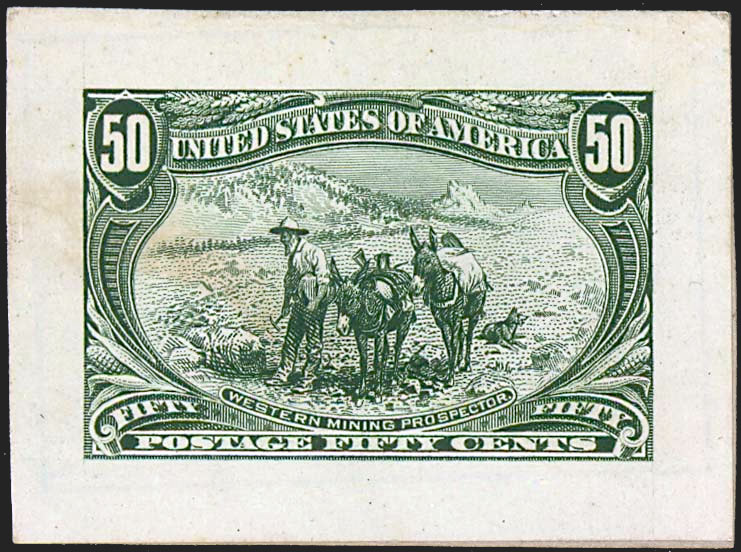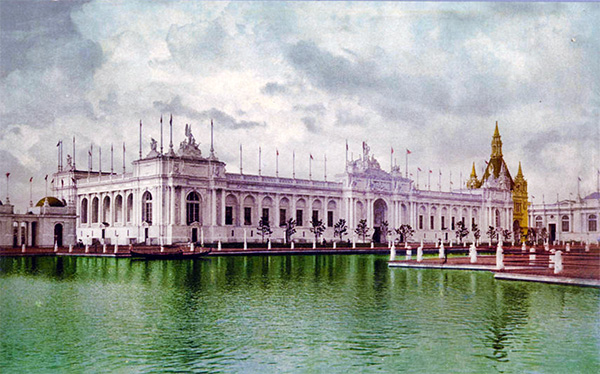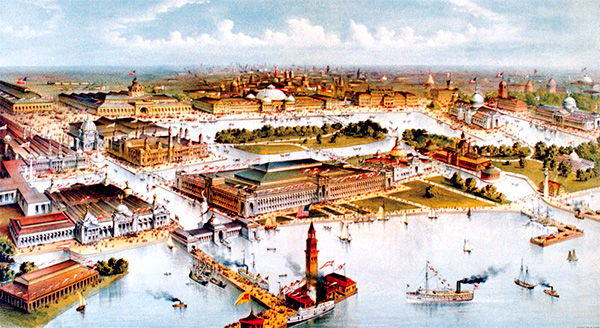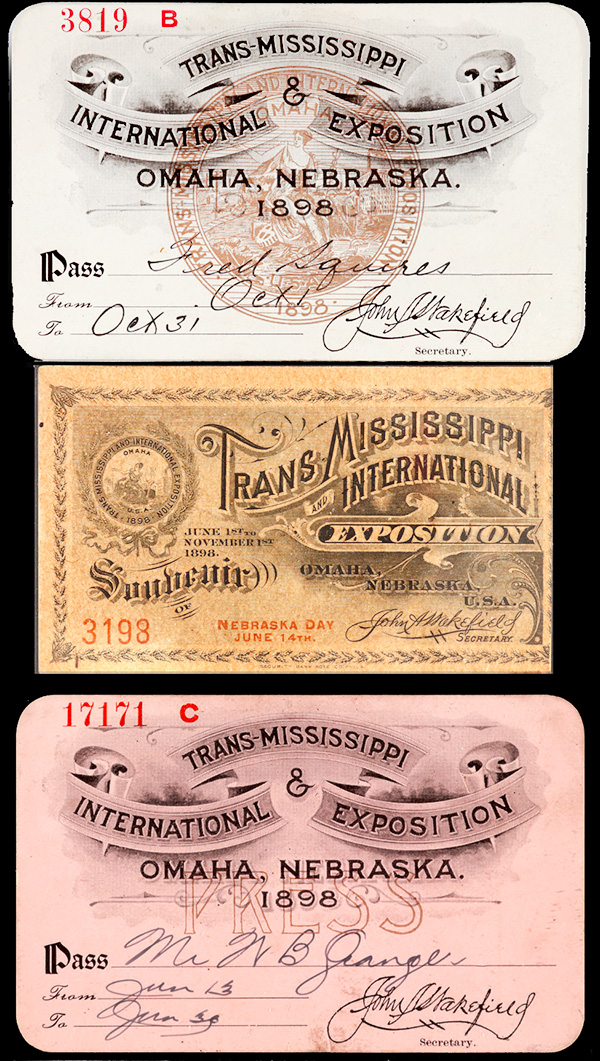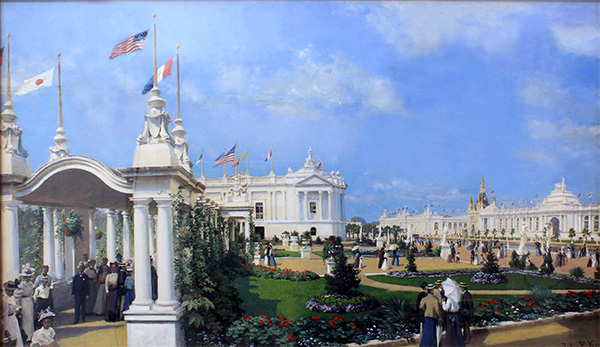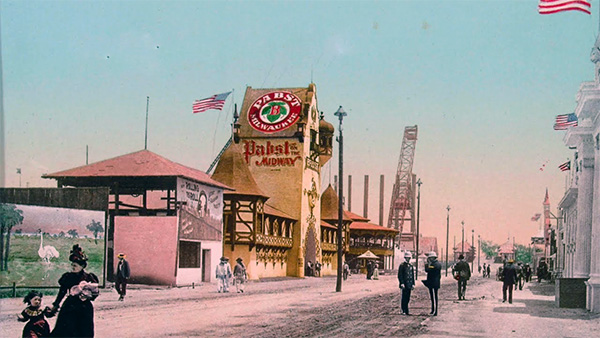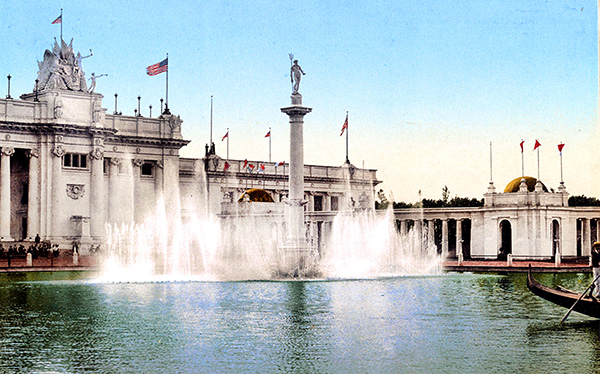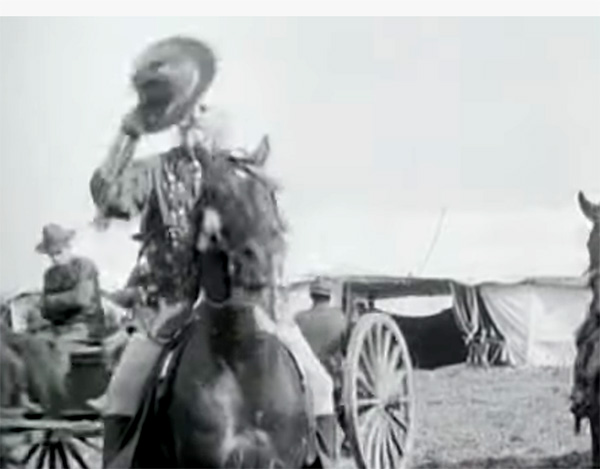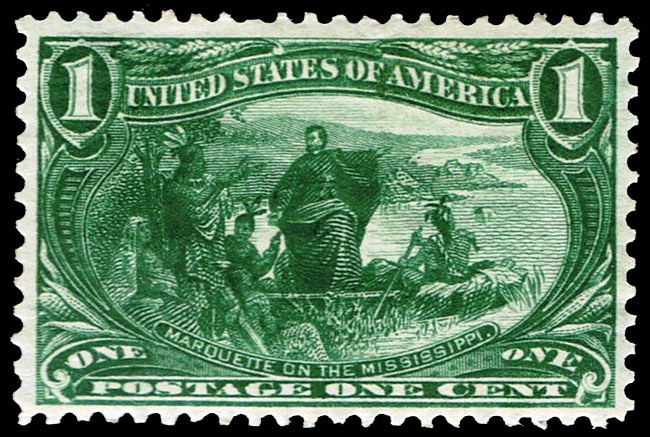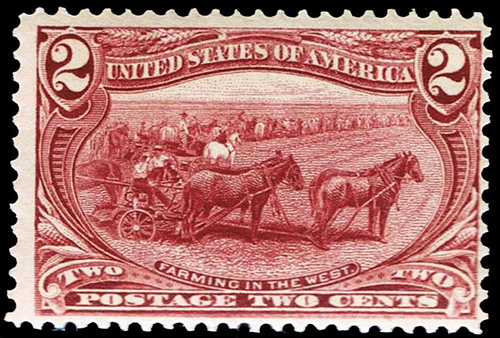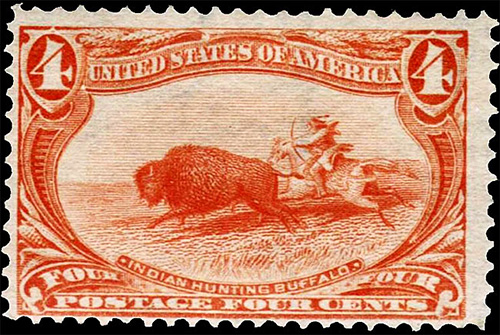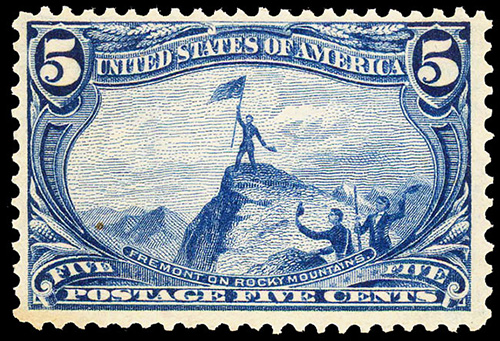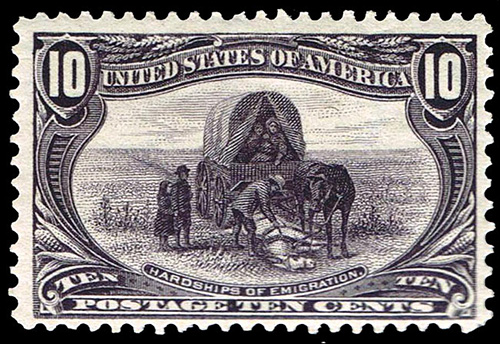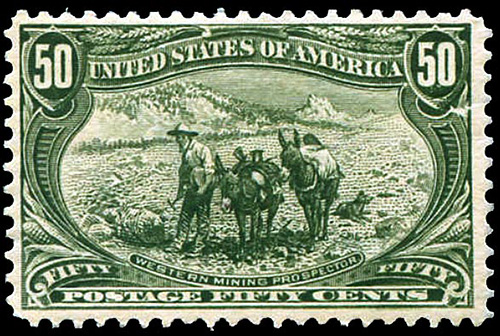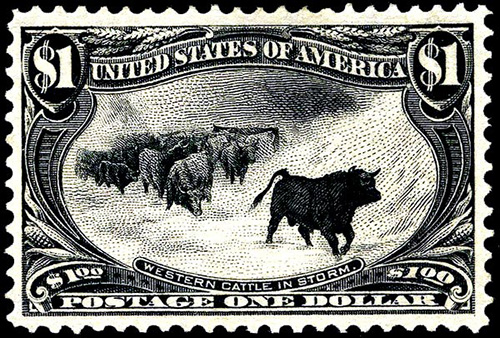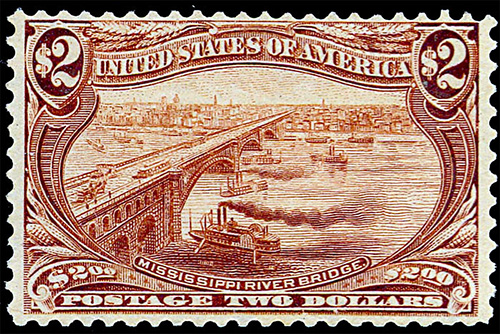Basic Info
50¢
Sage green, dark sage green
Printing Method: Engraved
Subject: Western Mining Prospector
Number issued: 530,400
Perforations: P12
Watermark: Double Line USPS
Scott #: 291
Issued: June 17th, 1898
Value
Used
$35 - $55
No postmark with gum (MH)
$125 - $200
Full perfect gum, no postmark
no trace of stamp hinge mark (MNH)
$1,000 - $2,000
First Day Cover
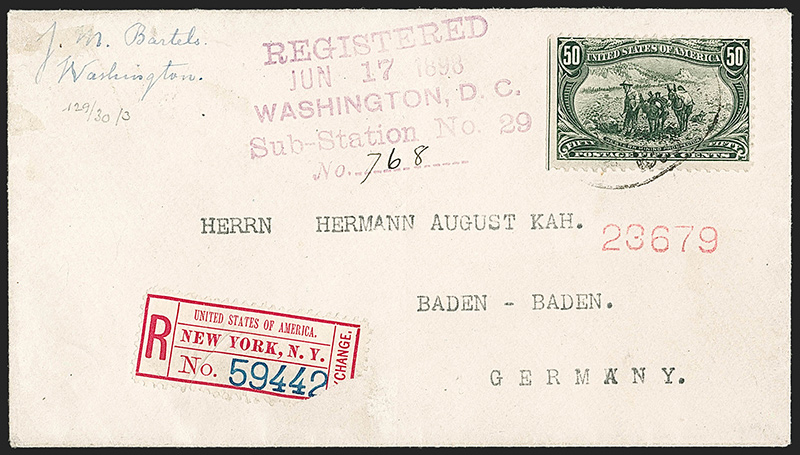
First day cover, June 17th, 1898
#291 Plate #'s
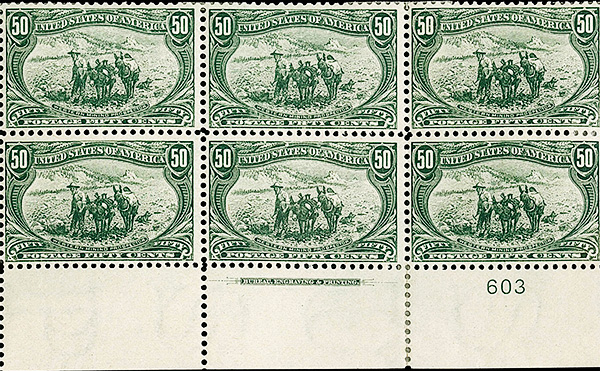
#291 was issued with the following plate #
603
Almost a bi-color stamp
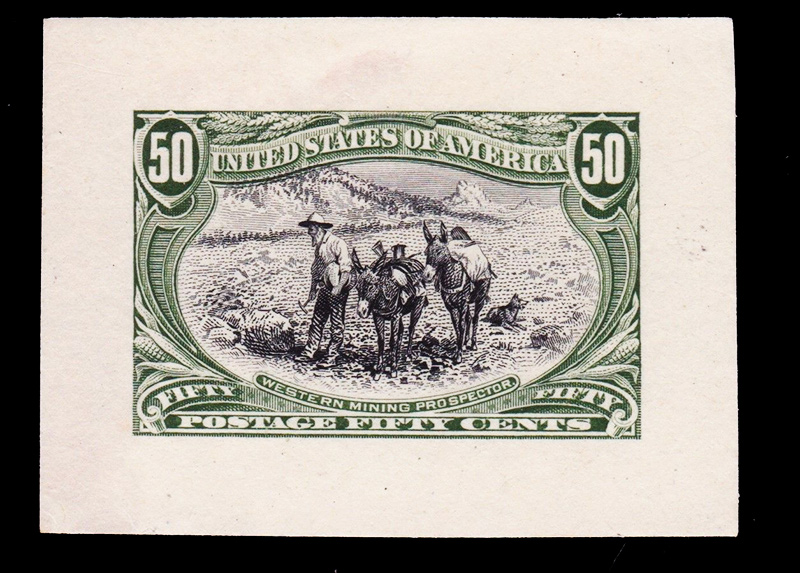
It was intended to print the Trans-Mississippi issue with a black vignette and a frame in color. The bi-color idea had to be abandoned because of the fact that the Spanish American War, which broke out in April, 1898, necessitated the printing of enormous quantities of revenue stamps and the facilities of the Bureau were taxed to the utmost . The time and manpower needed for the printing of stamps in two colors could not be spared and it was necessary for the Bureau to abandon the proposed bi-color stamps in favor of stamps of single colors.
The Inspiration for the Design
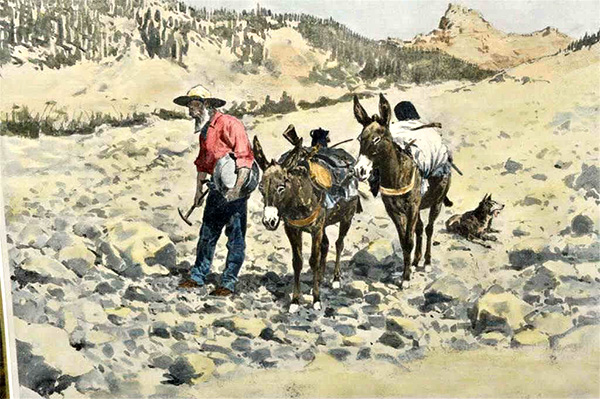
For the vignette was based on Frederick Remingtons painting 'The Gold Bug'.
By the time gold prospectors had reached California most mules had gone lame. Upon their arrival he had to pay at least pay $2 for a long-handled shovel, $1.50 for a pick, and a $1 for a gold pan. Food cost $10 a day. Needless to say those that benefited from the gold rush were not the prospectors, it was those that supplied and supported them.
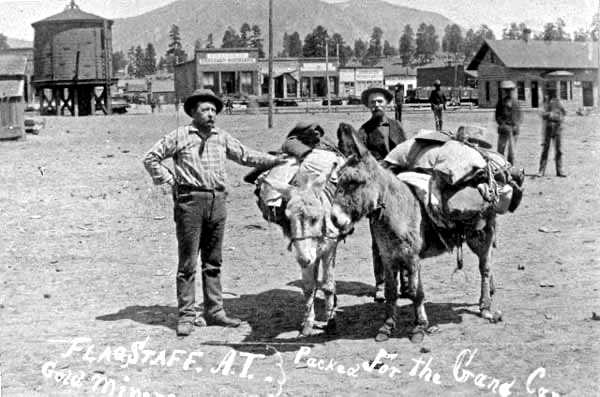
An actual mining prospector in the west
Essays and Proofs
The Omaha World’s Fair

The Trans-Mississippi Exposition was a World’s Fair hosted in Omaha, NE from June 1 to November 1 of 1898. The purpose of the Omaha World’s Fair was to exemplify the fertility and potential of Western farming and manufacturing as a definite pathway to financial success. It attracted 2.6 million visitors.
A two-thousand foot-long lagoon designed to resemble Venetian canals hosted gondola rides as a whimsical form of transportation throughout the fair. Stately trees and lush grass plots lined artistically crafted walking paths, illuminated by electric lights. Bright white building designed in Renaissance style reflected ancient Greek and Roman influences and possessed strenuous constraints on color, scale and height. All was built out of cheap materials or designed not to last, at the end of the exposition it was all removed.
There were two great attractions during the show, the first being President McKinley's speech which attracted 100,000 people to the plaza. The other was Buffalo Bill's Wild West Show, a video of which can be viewed below.

